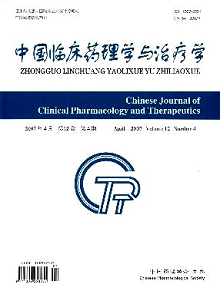Effective fractions A and B from enzyme-digested colla corri asini on hematopoietic recovery in γ-irradiated mice
WU Hong-zhong, YANG Fang, CUI Shu-ya, QIN Yu-feng, ZHANG Yuan-xing, LIU Jian-wen
2007, 12(4):
417-421.
 Asbtract
(
145 )
Asbtract
(
145 )
 PDF (207KB)
(
1117
)
References |
Related Articles |
Metrics
PDF (207KB)
(
1117
)
References |
Related Articles |
Metrics
AIM: To further understand the hematopoietic activities and mechanisms of fraction A (1.0 g/kg and 2.0 g/kg) and B (0.8 g/kg and 1.6 g/kg) from enzyme-digested colla corri asini on the anemic mice caused by 3.5 Gy γ-irradiation. METHODS: The fraction A and B were orally administrated to the anemic mice for 25 days.After confirming the protective effects of fraction A and B, we examined the effects of fraction A and B on CFU-GM, BFU-E, CFU-E in the bone marrow and spleen, cytokines in the serum, CUF-S in the spleen, ROS in bone marrow cells, SOD and GSH-Px in serum and liver homogenate. RESULTS: Fraction A administrated at 2.0 g/kg and 1.0 g/kg and fraction B administrated at 1.6 g/kg and 0.8 g/kg activated granulocyte and erythrocyte progenitor cells in bone marrow and spleen, led to the recovery of white blood cell and red blood cell count to a value that is almost approaching the basal level, increased the colony number of CFU-GM, BFU-E, CFU-E in bone marrow and spleen, stimulated the CFU-S in the spleen, significantly stimulated the secretion of IL-6 and GM-CSF, decreased the ROS level in bone marrow cells, and increased the SOD activity in bone marrow and liver and GSH-Px activity in serum. CONCLUSION: These results suggest that the fraction A and B from the enzyme-digested colla corri asini promote hematopoiesis by activating immature granulocyte and erythrocyte cells, in part by stimulating the GM-CSF and IL-6 secretion and elevating the ROS scavenging ability.


